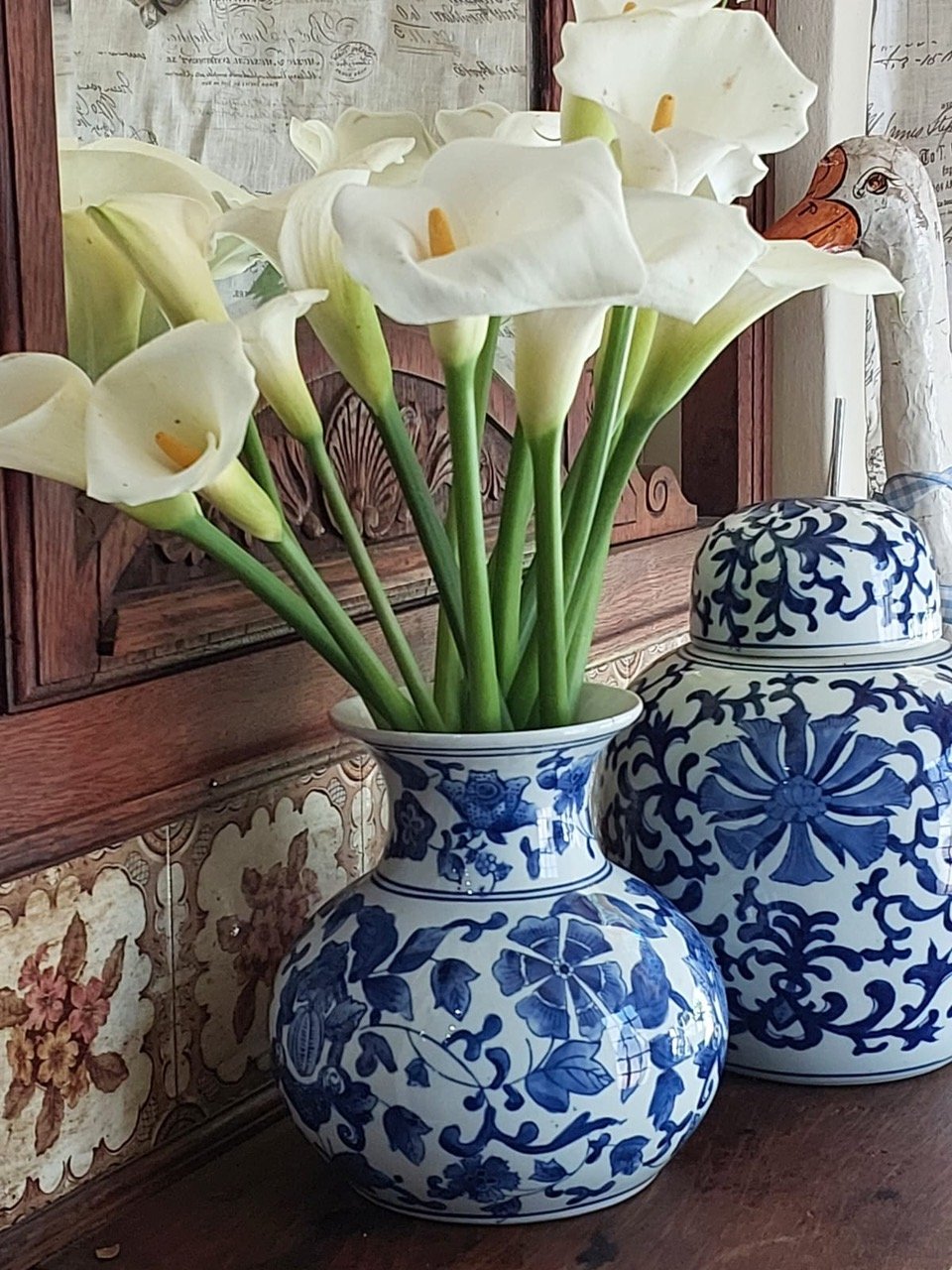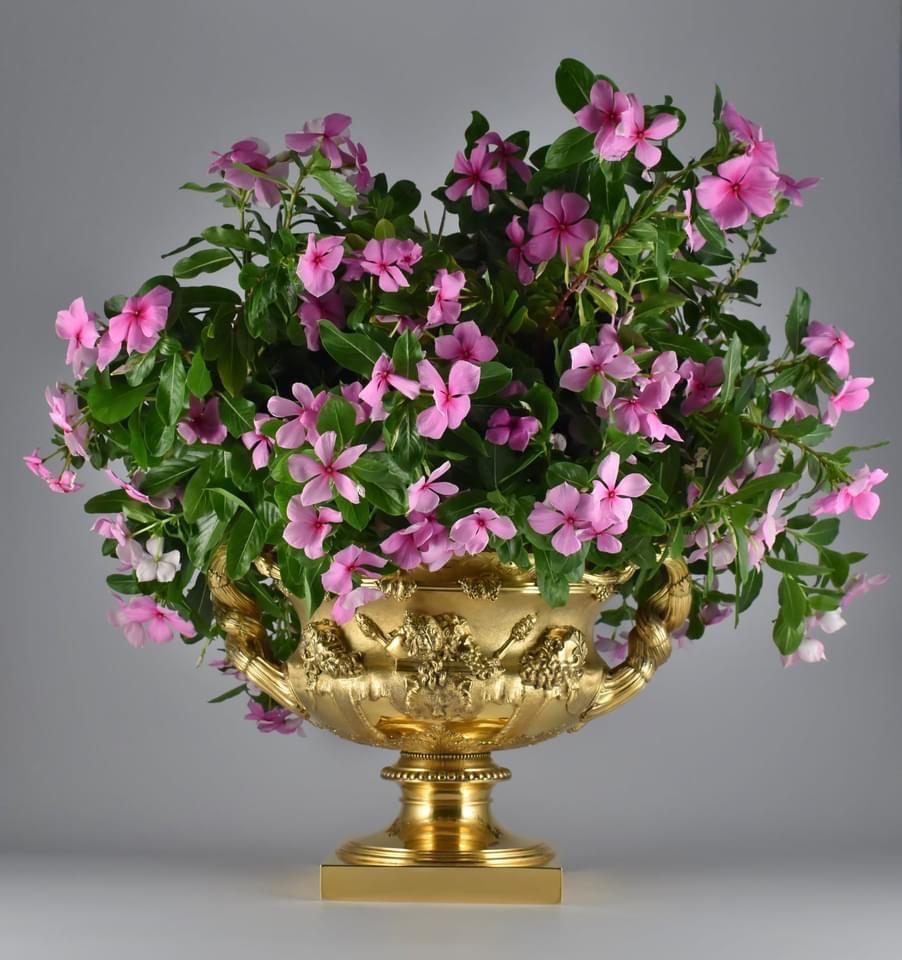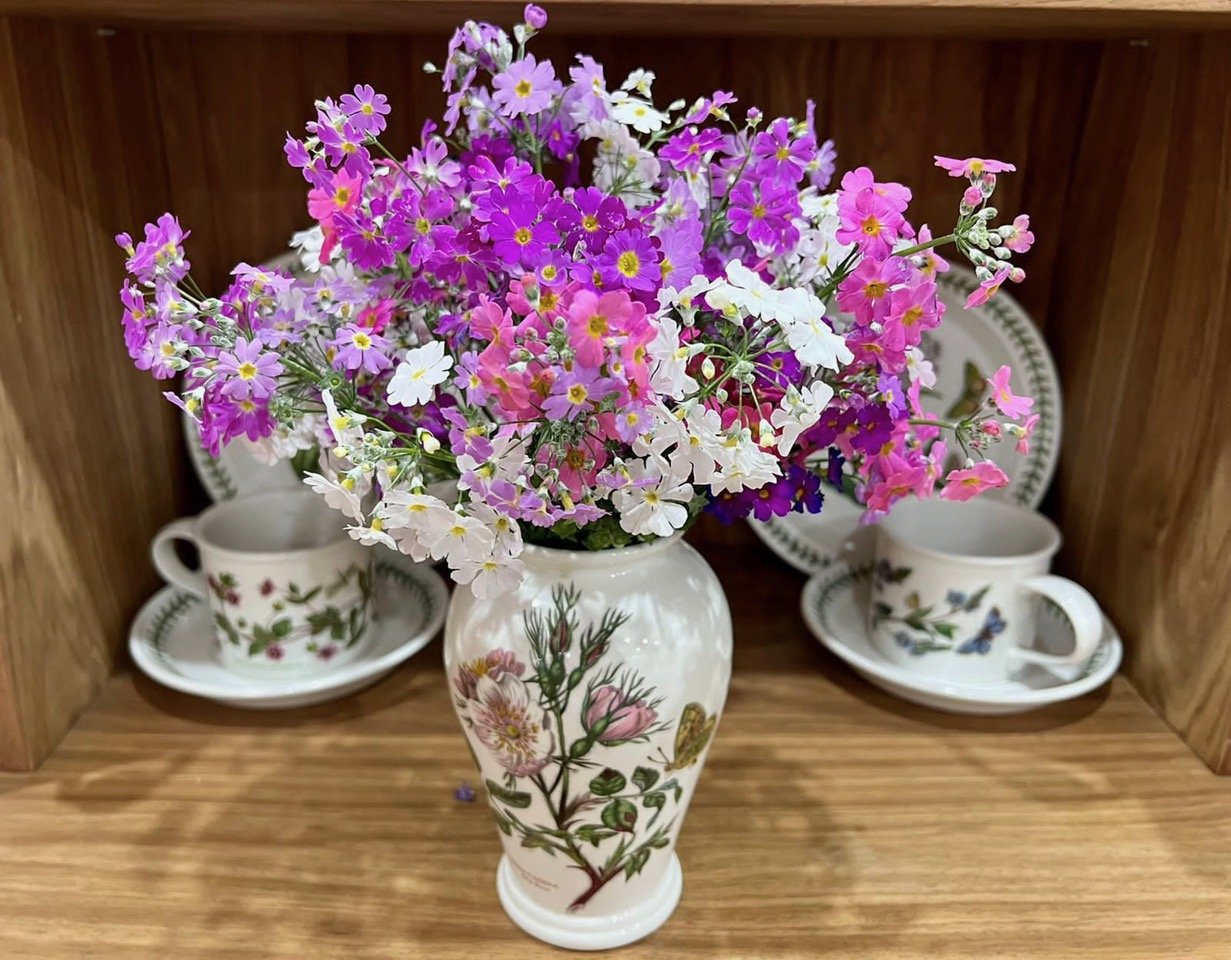We also timed our enquiry well. As firm promoters of Gauteng's jacaranda season, each year we run a photo competition and event series to celebrate the purple blooms (read about our #JacarandaInYourPocket 2023 photo walks and tours here). On our photowalks in Joburg and Pretoria in the past two weeks, we couldn't help but be struck by the magic of the season. Gardens are bursting with full-headed roses and huge clouds of bougainvillaea and jasmine. The vase is in its golden age, and what better way to display blooms than in a timeless piece? According to Terry, you can find an antique piece to suit any budget. As we near the gift-giving season, it's also a delightful item to give or receive. Here are Terry's tips on collecting these lovely objects, with options that range from R300 to thousands of rands.
Oriental vases
In the late 1860s, the trend was for blue and white vessels. These were copies of early 17th-century Chinese wares that retailers around the Western world imported en masse to supply the local demand. Many of these served as tea or ginger storage jars. Today, the trend for blue and white is still strong, and many of these pieces can be found filled with spring blossoms. One of the most common patterns is the Willow Pattern, which was actually designed in the late 1700s in Staffordshire. This pattern became so popular that it was copied by Chinese potters, and today, pieces from China with this pattern from the Qianlong period fetch vast amounts of money. Many of these storage jars have lost their lids, making for superb vases.
Moorcroft pottery
William Moorcroft created a collection inspired by his travels to the botanical gardens of the world. His son, Walter, continued his father’s passion. Moorcroft pieces are covered with flowers, including a rare South African protea with spring flowers. There is an array of floral patterns on the vessels and the magical element of the flowers on the vases with sprays of flowers makes for a beautiful displaySilver epergnes and vases
Many companies produced silver vases and centrepieces. Epergnes are generally a cluster of small vases with either a central vase or a fruit bowl below. An epergne centrepiece on the table by the famous WMF factory can set your festive table apart. Although the bowl was designed to be filled with fruit, you can also fill it with your favourite holiday chocolate treats and cascade the central vase with flowers. Silver trumpet vases make for an elegant display at High Tea for a single rose or sprig of fynbos. Glass epergnes were popular in the Victorian period, with fine pink cranberry glass epergnes being popular, and then in the late 1950s milk-glass epergnes could be found from the Fenton Glassworks.
Rose bowls
Rose bowls have been a décor statement since the Victorian period and although, as the name would imply, they were filled with roses, today you can think outside the box (or bowl) and create a presentation of mixed spring flowers. Rose bowls were made of silver, glass, and silverplate, making them an option for those not wanting to spend a fortune.French Art Glass
The French Art Glass movement, also known as Cameo and part of Art Nouveau, was frontlined by Lalique, Gallé and Daum, and created an era of three-dimensional glass that is still recognised as one of the most exciting periods of glassmaking. Although these pieces with their acid-etched detail are highly collectable today, they are, in Terry's opinion, some of the best vessels for spring flowers. The vibrant colours of the glass make for an endless display of floral decoration in your home.Mid-century glass – the look of Modernism
Sweden was highly influential during this period. The leek design in classic colours (green, greys and shades of blue) of the time has seen a huge revival with collectors today. Orrefors Glassworks made some classical glass vases from this period, and they can be highly priced, but you can find similar ones for a few hundred rand.Clarice Cliff
Clarice Cliff created an array of superb vases from her ranges known as Fantasque and Bizarre. She came up with her designs after the war, and these works were seen as a way of brightening up the world. Interestingly, these were sold throughout North America, the U.K, Australia, New Zealand and South Africa, but not in mainland Europe. These pieces are, for the most part, brightly overpainted in a wonderful array of colours and are expensive to buy. However, her quirky pieces, such as the Swan and Budgerigar vases, can be more easily found and can cost less than R2,000 if you get lucky. Moulded and hand-painted, they make for conversational pieces around any table.
Make your own
Finding a different use for an item can also be a thrill for a collector. Recently, Terry did an antique fair with a few Royal Doulton character jugs, and at the fair, he placed bunches of sweet peas in them. He was surprised at how amazing they suddenly looked. An old teapot without a lid or a water jug also makes for a lovely display of flowers. A beautiful pottery fruit bowl with floating flowers makes for a wonderful floral display, too.A vase is a vessel used for flower arrangements but for Terry, something that may not be used for flowers normally, like an old copper pot, a teacup at each table setting with a beautiful flower inside, or a line-up of decanters that have lost their stoppers with a single, long-stem rose, are just as aesthetically pleasing. For example, the Victorian table-setting era was a period of high decoration, says Terry, and salt cellars were commonplace and came in many forms. Some even had glass or crystal bases in the form of a swan, and a collection of these in front of a festive place setting with a small decoration of flowers also looks spectacular.
Clyde Terry is the owner of Clyde on 4th Antiques and Collectables in Melville. He is also the founder of two of Gauteng's most well-known antique fairs, Brooklyn's Antique Fair in Pretoria and Nelson Mandela Square Antique Fair in Sandton.







Comments